These childhood favorites haven’t just aged poorly—they’ve been scientifically shamed.

If you grew up in the Boomer era, chances are your childhood kitchen was filled with sights, smells, and tastes that felt totally normal at the time—but would raise serious eyebrows today. Back then, nobody was reading ingredient labels or worrying about preservatives with names you couldn’t pronounce. Food was about convenience, tradition, and whatever Mom could make stretch for a family of five.
But times change, and so does our understanding of what we put in our bodies. What once passed as everyday meals are now the kinds of things modern nutritionists would side-eye with concern—or straight-up ban if they could. It’s kind of wild to look back and realize how much of what we ate without a second thought is now linked to health warnings and cautionary tales. Still, those foods hold memories, even if today’s experts wouldn’t touch them with a ten-foot fork.
1. TV dinners were a Boomer staple, but nutritionists today would call them a sodium bomb.

Back in the day, TV dinners felt like the height of convenience. Pop a foil tray in the oven, wait a while, and boom—instant meal with meat, potatoes, and a dessert all in one, says an expert from The Wonder Years YouTube video. It felt futuristic, even a little fancy. But modern nutrition experts look at those frozen trays and see a red flag factory. Between the sky-high sodium levels, artificial preservatives, and processed meats, these meals are a health nightmare in disguise. They were designed for shelf life, not your lifespan.
The portion sizes were often deceptive, and the ingredients read more like a chemistry experiment than a recipe. Sure, they were easy and affordable, but today’s dietitians would rather see people prep real food than rely on something loaded with additives. That nostalgic craving for Salisbury steak might hit hard—but so will the salt content.
2. Canned spaghetti was comfort food then, but now it’s considered ultra-processed trouble.

There was something weirdly satisfying about opening a can and pouring out a steaming pile of saucy spaghetti. It was quick, it was kid-approved, and it felt like a hot meal with zero effort, writes Aaron George for the Ohio State University website. But nutritionists today cringe at the ingredients. These canned pastas are loaded with added sugars, sodium, and low-grade oils that do your body zero favors. The noodles are often mushy beyond recognition, and the sauce? More corn syrup and salt than tomatoes.
What made it appealing back then—soft texture, sweetness, and ease—is exactly what makes it a red flag now. Health professionals encourage whole ingredients and fiber-rich options, not limp pasta swimming in an overly sweet sauce. It may stir up warm memories of after-school snacks, but it’s also a perfect example of how far our food awareness has come. Convenience food doesn’t have to come at the cost of nutrition anymore.
3. Nutritionists say Tang is more of a sugar bomb than a space-age drink.

If you grew up in the Boomer era, you probably remember thinking Tang was the coolest drink ever—especially when you heard astronauts drank it, according to Casey Barber reporting for CNN. It had that bright orange color, the zingy flavor, and the fun of scooping powder into a pitcher like a kitchen scientist. But fast-forward to today, and nutrition experts would raise every alarm in the book. Tang is mostly sugar, artificial flavors, and food dye. It masqueraded as a vitamin C-packed drink, but there’s little in it that’s good for your health.
That vibrant orange glow? Not exactly nature-made. Most modern dietitians would steer clear of it and recommend actual fruit or water infused with citrus if you want a refreshing pick-me-up. It might have been fun and futuristic in its time, but now it’s lumped in with the long list of sugary drinks that can mess with blood sugar and teeth alike.
4. Bologna sandwiches were a lunchbox hero, but today’s experts call them processed meat pitfalls.

For a lot of Boomers, a bologna sandwich on white bread with a swipe of mayo was lunchtime gold, say writers at What Dad Cooked. It was simple, cheap, and tasted great with a bag of chips on the side. But current research around processed meats like bologna paints a much bleaker picture. Nutritionists now know that regular consumption of cured and processed meats is linked to increased cancer risk, high blood pressure, and other health issues.
Bologna is often packed with sodium, nitrates, and mystery meat blends that don’t exactly scream wholesome. Toss in refined bread and you’ve got a combo that’s heavy on nostalgia but light on nutritional value. What once filled lunchboxes with pride now fills health reports with warnings. Experts these days would rather see people opt for lean proteins, whole grains, and fewer additives. Bologna had its day—but it’s not making a healthy comeback anytime soon.
5. Canned fruit cocktail was dessert back then, but it’s now seen as syrup-soaked sugar in disguise.
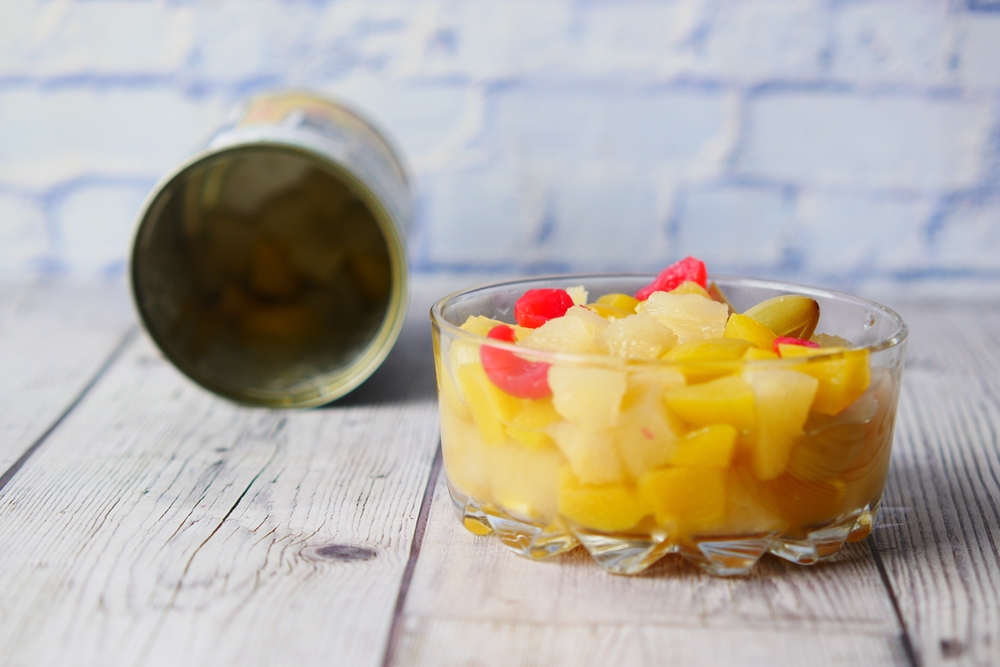
Back in the Boomer era, opening a can of fruit cocktail felt like serving dessert with a halo. Cherries, grapes, pears—it was colorful, sweet, and served cold. What wasn’t to love? The problem lies in the syrup. Most of those cans were packed in heavy syrup, which added an unnecessary load of sugar to something that’s already naturally sweet. Nutritionists today would rather you eat fresh or frozen fruit without added sugar or preservatives. Canned fruit cocktail tends to be stripped of fiber and loaded with additives that diminish its benefits.
Sure, it was an easy side dish or treat, but it also helped generations develop a sweet tooth disguised as a health food. Today’s food experts would likely suggest draining the syrup or skipping it altogether in favor of fresh fruit. Sweet memories, yes—but also a sticky mess when it comes to nutrition.
6. Iceberg lettuce salads were everywhere, but experts now say they’re nutritionally underwhelming.

For many Boomers, a salad meant a wedge or a pile of shredded iceberg lettuce topped with bottled dressing, a tomato slice, and maybe some croutons. It looked like you were eating healthy, but nutritionists today consider iceberg lettuce the lightweight champ of greens. It’s mostly water with very few vitamins, minerals, or fiber compared to darker leafy greens. While it’s not harmful, it doesn’t bring much to the table nutritionally. What’s worse, it was often drowned in high-fat dressings that packed more calories than the meal itself.
Dietitians now recommend building salads with spinach, kale, arugula, or romaine to get more nutrients in every bite. Iceberg might still have its crisp charm, but it’s fallen way behind in the leafy green race. If you want a salad that actually fuels your body, you’ll have to go a little deeper into the produce aisle than Boomers typically did.
7. Creamed chipped beef on toast was a military favorite, but now it’s a dietitian’s nightmare.

Also known by its infamous nickname “SOS,” this salty, creamy dish was a staple in military mess halls and Boomer-era kitchens alike. It’s easy to see why—it was affordable, filling, and didn’t require fancy ingredients. But modern nutrition experts see it as a sodium-heavy, fat-loaded meal with almost no nutritional upside. The white sauce is usually made with butter, flour, and milk, which piles on saturated fat. The beef? Often cured and overly salty.
Served over refined white toast, the dish becomes a perfect storm of high sodium, low fiber, and minimal vitamins. It’s the kind of comfort food that sticks to your ribs and possibly your arteries. While it holds a nostalgic spot for many, today’s nutritionists would suggest swapping in lean protein and whole grains if you want something warm and hearty. The creamy throwback charm doesn’t quite outweigh the health concerns.
8. Nutritionists say margarine’s old formula was worse than butter for your heart.
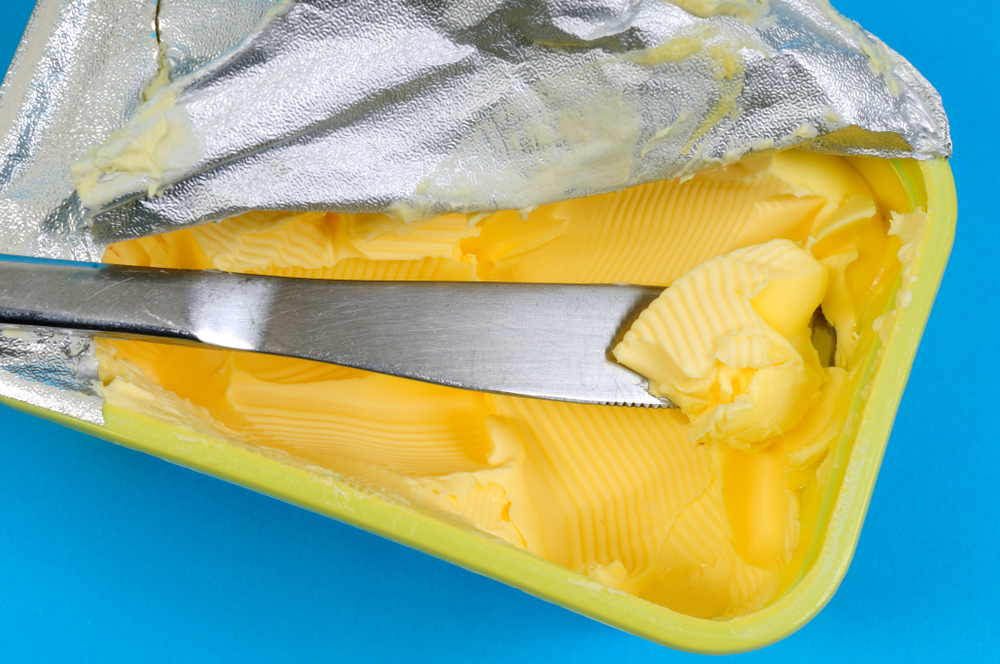
Boomers were told for years that margarine was the healthier choice—especially during the era when fat was enemy number one. But many margarine products of the past were packed with trans fats, which we now know are much worse for heart health than the saturated fat in butter. Those artificially hydrogenated oils extended shelf life but clogged arteries in the process. Nutritionists today urge people to avoid trans fats entirely due to their strong links to inflammation and cardiovascular disease.
While modern versions of margarine have improved, those early tubs were health disasters hiding in plain sight. Ironically, in trying to avoid butter, Boomers embraced something even more harmful. These days, dietitians lean toward natural fats like olive oil or avocado over processed spreads. Margarine might have been a kitchen “upgrade” back then, but it’s earned its place on the list of foods better left in the past.
9. Powdered drink mixes were all the rage, but experts now call them sugar masquerading as hydration.
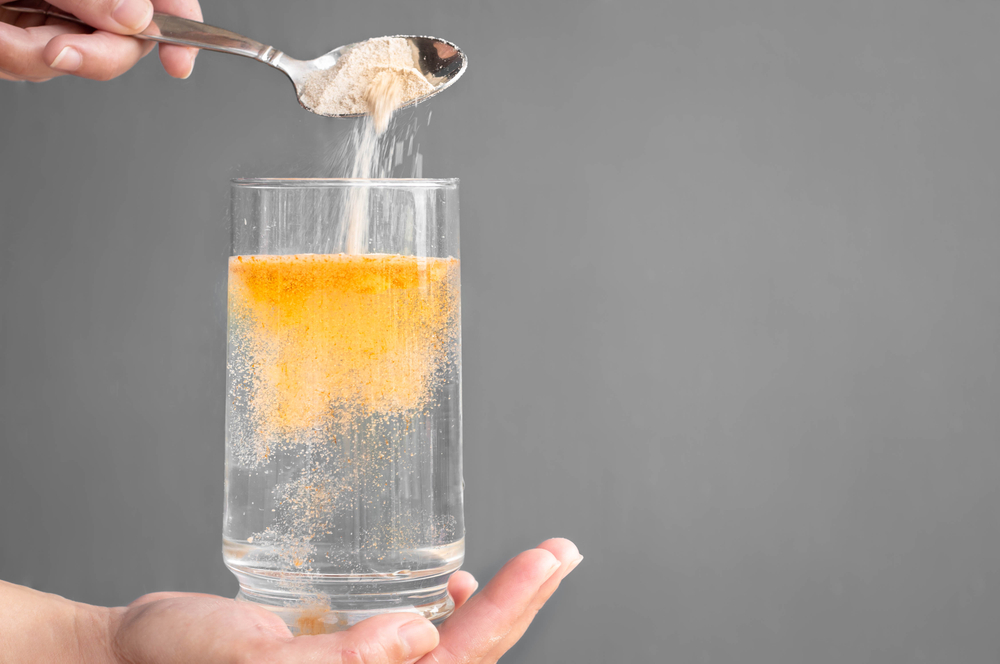
Back in the Boomer era, powdered drink mixes were a kitchen staple. Just add water, stir, and you had a bright, fruity beverage that felt way more fun than plain water. The colorful packets lined the pantry, and kids gulped it down by the gallon. But when you look at what’s actually in those mixes—sugar, artificial flavors, dyes, and almost no actual fruit content—it’s easy to see why nutritionists cringe. These drinks were basically candy in liquid form, dressed up as thirst-quenchers. They didn’t hydrate so much as spike blood sugar and train taste buds to crave sweetness.
Dietitians today emphasize drinking water, herbal teas, or naturally flavored infusions instead. What once felt like a treat is now seen as a dietary landmine. Hydration shouldn’t come with a side of additives. Boomers may have loved the ease, but health experts would much rather see a glass of good old-fashioned H2O.
10. Jell-O molds were dinner-party stars, but today’s dietitians see them as empty calories in disguise.
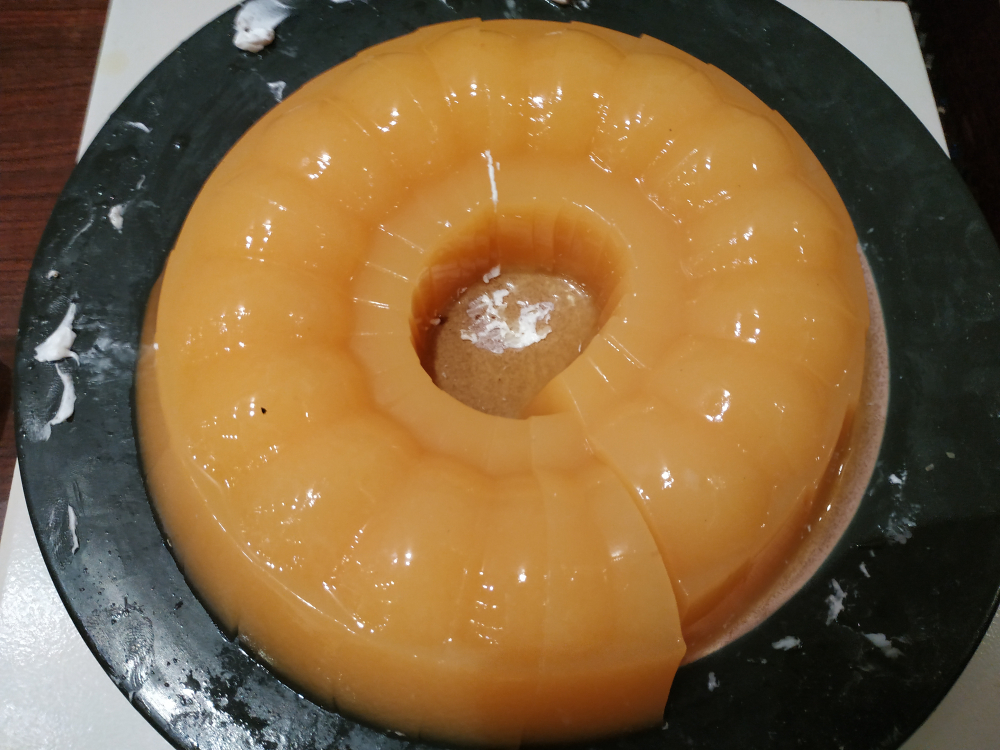
If there’s one thing that screams vintage, it’s a wobbly Jell-O mold filled with fruit, nuts, or even meat—yes, meat. These gelatin-based creations were the highlight of many Boomer-era potlucks and holiday spreads. But ask a modern nutritionist, and you’ll get an eye-roll and a quick breakdown of everything wrong with them.
Jell-O is mostly sugar and artificial flavoring, with zero fiber and minimal nutritional benefit. The texture may be nostalgic, but it doesn’t do your body any favors. Toss in canned fruit or marshmallows, and it becomes a sugar bomb pretending to be a side dish. Health professionals today encourage real fruits and whole foods over gelatin desserts with glow-in-the-dark coloring. It might have looked like a fun and fancy centerpiece, but nutritionally, it’s a hollow snack. Some things are better left in retro recipe books—or remembered, not revived.
11. Canned soups were a weeknight go-to, but nutritionists now warn about what’s lurking inside.
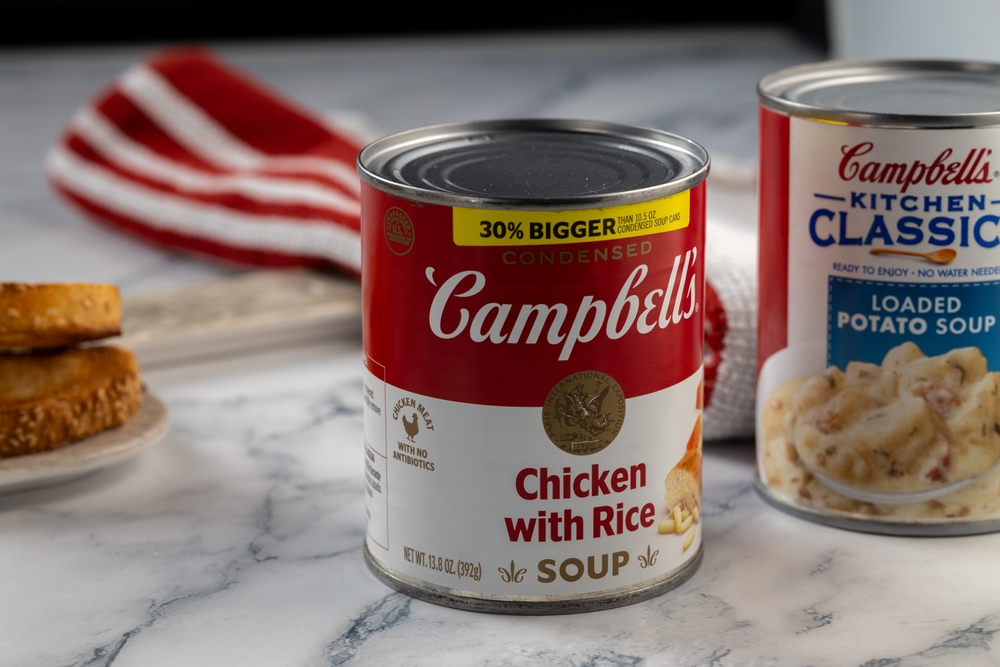
Canned soups were a staple in Boomer households—quick, cheap, and easy to pour straight into a pot. Chicken noodle, tomato, split pea—you name it, there was a can for it. But modern experts take issue with what’s inside those convenient tins. They’re often overloaded with sodium, preservatives, and questionable additives that make them more shelf-stable than health-supportive. Even the “healthy” versions can be sneaky with their salt content. Nutritionists today stress reading labels carefully or making soups from scratch to control the ingredients.
Canned options may be comforting, but they often lack the fiber, vitamins, and healthy fats needed for a balanced meal. What once passed as a quick dinner fix now looks more like a nutritional compromise. For many health-conscious eaters, the shortcut just isn’t worth the risk. There’s still room for soup—just not the kind that sits in your pantry for years.
12. Diet soda was seen as smart and skinny, but experts now link it to major health risks.
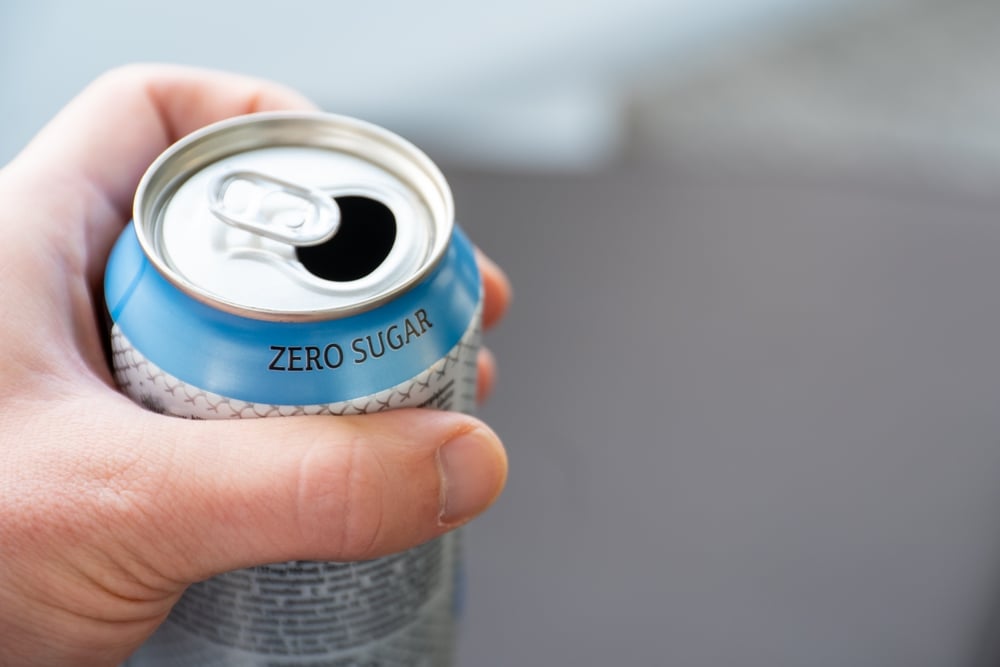
When diet soda hit the shelves, it felt revolutionary. All the fizz, flavor, and fun of regular soda, without the calories? Boomers embraced it as a guilt-free indulgence, often swapping it in as a “healthier” option. But today’s research paints a different picture. Artificial sweeteners like aspartame and saccharin, once hailed as miracles, are now tied to potential metabolic issues and gut health disruptions. Some studies even suggest a link to increased cravings and higher risk of certain diseases.
Nutritionists today don’t necessarily say “never,” but they strongly encourage moderation—and skepticism. Drinking diet soda daily in hopes of managing weight or blood sugar may do more harm than good in the long run. Water, sparkling water, or even diluted juice are preferred choices. What once felt like a savvy swap is now viewed with serious caution. Diet soda may be calorie-free, but it’s not consequence-free.
